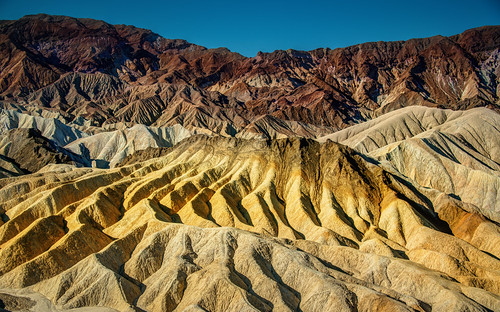This is a question I get asked regularly, and there really is no answer (sorry!).
The answer depends on you, what sort of landscapes you like shooting, what other gear you have, the environment you shoot in….
the list goes on.
I use a Canon 5D Mark III which is a full frame, digital SLR body. With this body, I use a Canon 17-40mm F4 L lens for most of my landscape photography.
Generally, the lenses that are the widest are the ones considered “best” for landscape photography. That is, the lenses that have the lower focal lengths. They generally allow the most in the frame. Good for those wide sweeping landscapes and awe-inspiring views!
However, what a wide angle lens is, depends on which camera body you are using. If you are using a crop-sensor DSLR (generally the cheaper DSLR bodies, like a Canon 700D), your lower focal length will be a smaller number than those lenses used with full frame cameras.
It sounds complicated. Generally, the widest lens you can get on a crop-sensor body is around 10mm (before becoming a fish eye lens). For example, a 10-20mm lens or a 12-24mm lens.
A full frame camera will not usually accept that 10mm lens… the minimum focal length for the full frame lenses is usually around 16mm (before becoming a fish eye lens). For example the 16-35mm Canon lens or a 17-40mm like mine.
Wide angle lenses are generally considered the best for landscape photography because they have the widest view in the lens. It is not uncommon for me to be fully set up on my tripod and about to take a shot, for someone to walk in to my photo and stand there oblivious: they don’t realise how much is in my viewfinder. Wide angle lenses take a lot in!
Wide angle lenses often suffer from common pitfalls not so prevalent in a longer focal length. For example:
- Barrel distortion – this refers to the curved horizon caused by wide angle lenses. Fairly easy to correct in post processing, but a pain if you don’t use any software to correct your images. This also can make wide angle lenses less desirable for portrait photography as the edges can be distorted.
- Chromatic Aberration – this refers to red/green fringing on highlight edges. Again, easily corrected with post processing.
- Vignetting – at widest focal lengths
Wide angle lenses can take a bit of getting used to… They capture the scene in a different way to longer focal lengths. It’s hard to explain unless you’ve used one, but perspective can appear a little differently. Things that are actually very close can appear further away and become insignificant. Perspective is a little altered and distorted. But, you can master this to your example to create some awesome photography!
This brings me to a few tips on using wide angle lenses:
- Get as close as you can to your foreground. A landscape photograph is typically composed with three areas – a foreground, mid-ground and background. Using a wide angle lens you really need to get as close to your foreground interest as you can. This can mean only 30cm away! This can render the interesting texture/patterns as much larger in the image.
- If you have buildings/structure in your image try and keep the camera level (i.e. horizon fairly central). This will reduce the distortion in the photo and reduce the amount the straight lines are bending/leaning in or out of the photo. For example, poles, jettys, lighthouses…. It’s important they are straight!
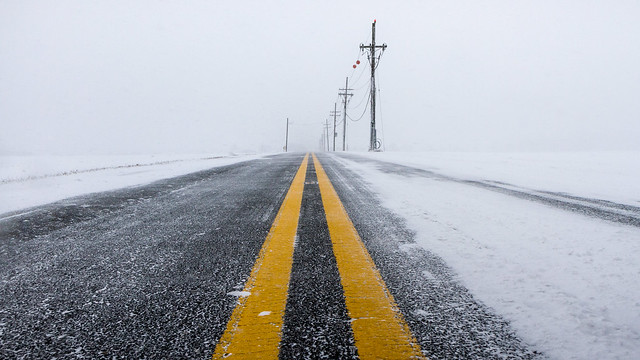 (ABOVE by Darren LoPrinzi – click on the photo to check out the rest of his portfolio)
(ABOVE by Darren LoPrinzi – click on the photo to check out the rest of his portfolio)
Saying that… you can also use lens distortion to your advantage – to suck the viewer in… For example here, the distortion works – the angle that the camera is at leads us to look at that huge sky:
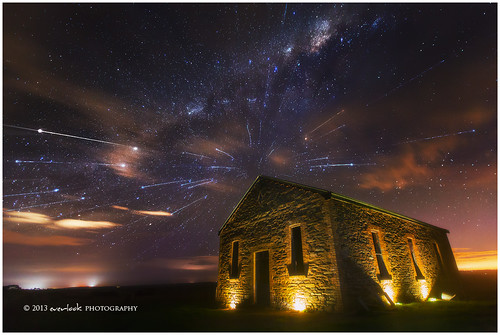 (ABOVE: Dylan Toh)
(ABOVE: Dylan Toh)
Or for example here, different perspectives can give a unique view with a wide angle lens:
 (ABOVE: Tony, Austr07 on Flickr)
(ABOVE: Tony, Austr07 on Flickr)
- Use leading lines in your images. The perspective of wide angle lenses really goes well with leading lines to draw the viewer in to the shot.
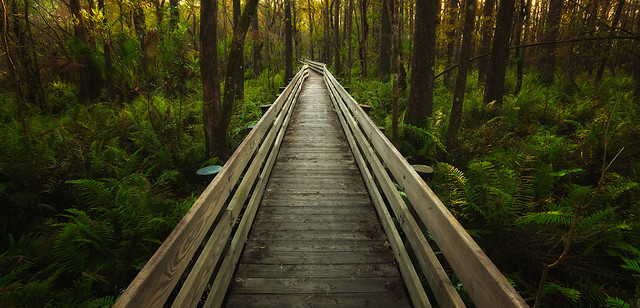 ABOVE: This one by Jay Parker was taken at 17mm. See how the lines just suck you straight in to the photo!
ABOVE: This one by Jay Parker was taken at 17mm. See how the lines just suck you straight in to the photo!
- If you need to use a polarising filter, try and zoom in a little so that you are not at your widest focal length. Some filters can cause vignetting in the corners of the photos, and polarisers have a tendency to create “patchy” skies when used at wide focal lengths.
- Keep it simple. To start with, at least! Wide angle photography can sometimes be guilty of “trying to cram it all in” – sometimes you have to try and eliminate all of the “clutter” and just keep those important elements.
- Similarly – make sure you have a focal point. Sometimes a wide angle lens is used best for those wide views – sometimes the view can be that big, that in the camera it looks very uninspiring because everything in it is so small! Find something of interest that can create a point in the photo for the viewer to focus on.
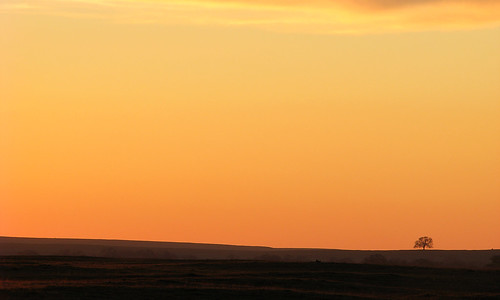 ABOVE: Chris Delle
ABOVE: Chris Delle
What are wide angle lenses good at?
As we already said, you can get a lot in the frame with a wide angle. But practically, what does this mean?
They are great for star-scapes and sucking in that big open sky!
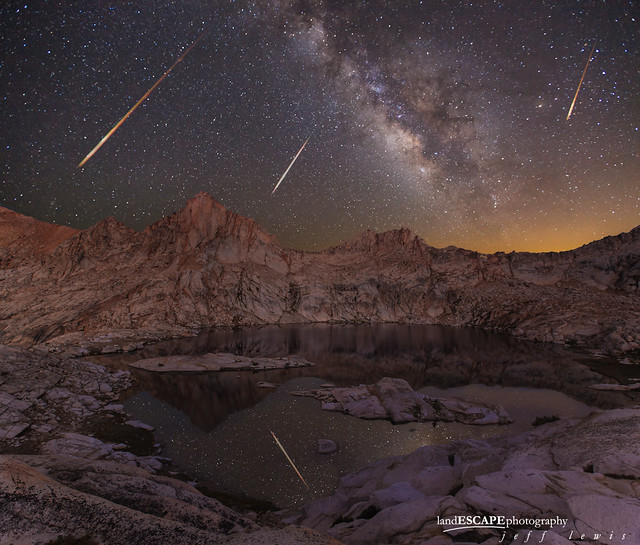 The above photo is another from Jeff Lewis – he is fast becoming one of my favourite US photographers. You’ll see a lot of his work from the California area throughout my blog.
The above photo is another from Jeff Lewis – he is fast becoming one of my favourite US photographers. You’ll see a lot of his work from the California area throughout my blog.
They are great for small spaces not just large vistas:
 ABOVE: Jason James at 17mm focal length and BELOW: William McIntosh inside part of Antelope Canyon.
ABOVE: Jason James at 17mm focal length and BELOW: William McIntosh inside part of Antelope Canyon.
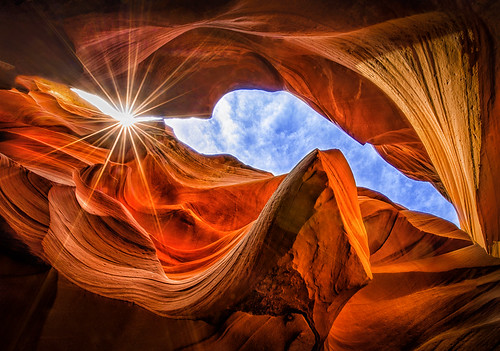 They are great at emphasising the foreground – you just have to get close enough and figure out the best angle:
They are great at emphasising the foreground – you just have to get close enough and figure out the best angle:
 ABOVE: David Copley
ABOVE: David Copley
Now, which wide angle lenses are the best?
I am not a technical expert (!), I do a lot of my research on the net before I buy any camera products – from lenses to tripods to triggers! I can only tell you my experience of what I have used.
For a crop camera, I used to love my Sigma 10-20mm lens. Sharp, and affordable. I now use a Canon 17-40mm F4 L but to be honest I preferred the Sigma (and it was half the price!).
For objective reviews I use websites like:
So can you only use a wide angle lens for landscape photography?
Of course not! Photography has no rules – get creative. Try different focal lengths!
Another lens I use for landscapes is the Canon 70-200mm F2.8 L lens. This is great for isolating parts of a scene, and I use it a little for lightning photography when I am keeping my distance from a storm. Obviously the 70-200mm gives more “zoom” (reach) than a 17-40mm lens – I find it effective for highlighting textures, patterns and shapes within a landscape.
What about prime lenses?
You don’t have to use a zoom lens! Prime lenses (fixed focal length lenses) are known for the superior sharpness and clarity. Landscapes don’t tend to run around too much (like people, kids and wildlife!), so prime lenses can be perfect for landscape photography. You can take the time to analyse the best angles and viewpoints.
You can get wide angle prime lenses as well, but I have not yet found one that will accept my Lee filter holder. The front elements on wide angle lenses tend to be quite bulbous. The prime lenses become so bulbous that a filter holder cannot attach. Not can circular, screw-on filters. For me, this is a problem!
I also use a 50mm F1.8 Canon lens for landscapes. How? I use it for stitching panoramas! One huge benefit of prime lenses (especially those whose focal length higher than say 50mm), is the lack of distortion. They are true to the scene. This makes multiple photos much easier to stitch together.
Here are some of my favourite landscape photos from Flickr, which have NOT used a wide angle lens:
Sometimes you really just need that extra little bit of reach. This quite often happens where there is water involved as you can’t walk through it to get closer!
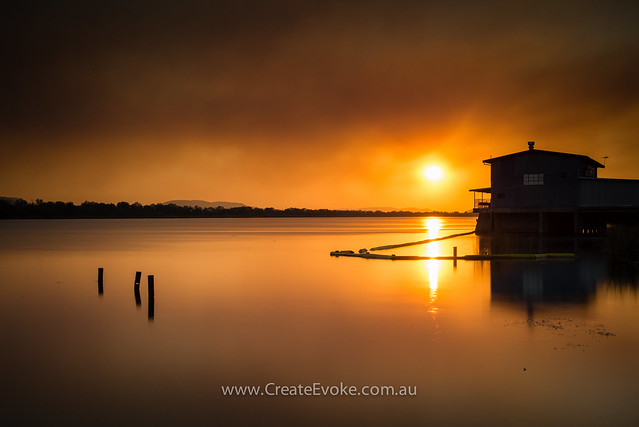 ABOVE from a fellow Darwin photographer Louise Law, taken at 35mm. The photo only shows what is important. The sun, water and old pump house. Simple and effective!
ABOVE from a fellow Darwin photographer Louise Law, taken at 35mm. The photo only shows what is important. The sun, water and old pump house. Simple and effective!
Longer focal lengths can eliminate the “clutter” of a wide angle lens.
This one (BELOW) from Patrick Smith was taken at 58mm. The important elements are the path and the gorgeous, enveloping archway of trees. The sky and outside of that archway is rightly eliminated:
 BELOW: Awesome isolation of light and patterns in the USA’s Death Valley (by Stuck in Customs – an awesome Flickr-ite to follow, full of travel inspired photography).
BELOW: Awesome isolation of light and patterns in the USA’s Death Valley (by Stuck in Customs – an awesome Flickr-ite to follow, full of travel inspired photography).
For a more technical explanation, and more detail in to the specifics of how a wide angle lens works – check out this awesome blog post by Ken Rockwell http://www.kenrockwell.com/tech/how-to-use-ultra-wide-lenses.htm

